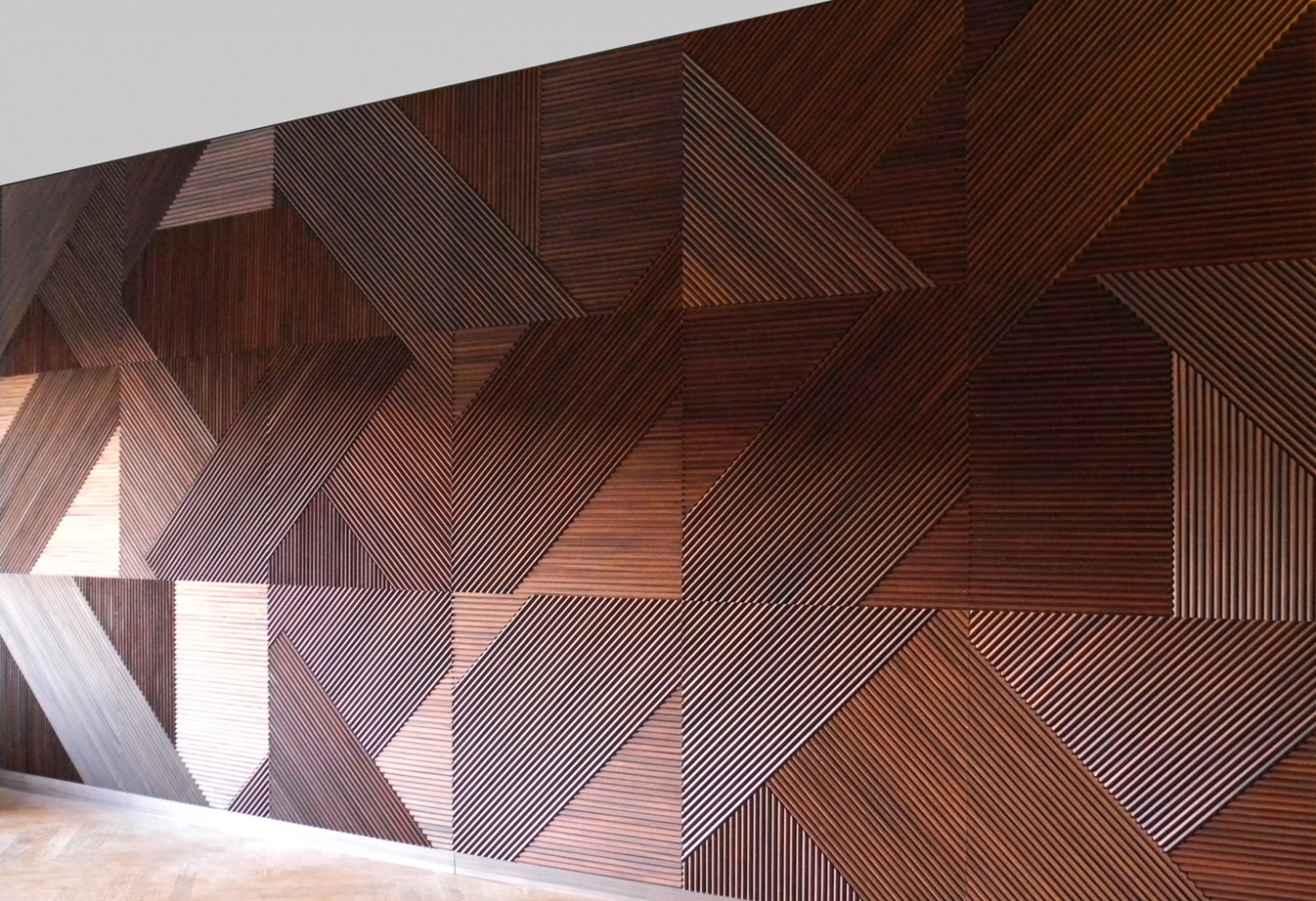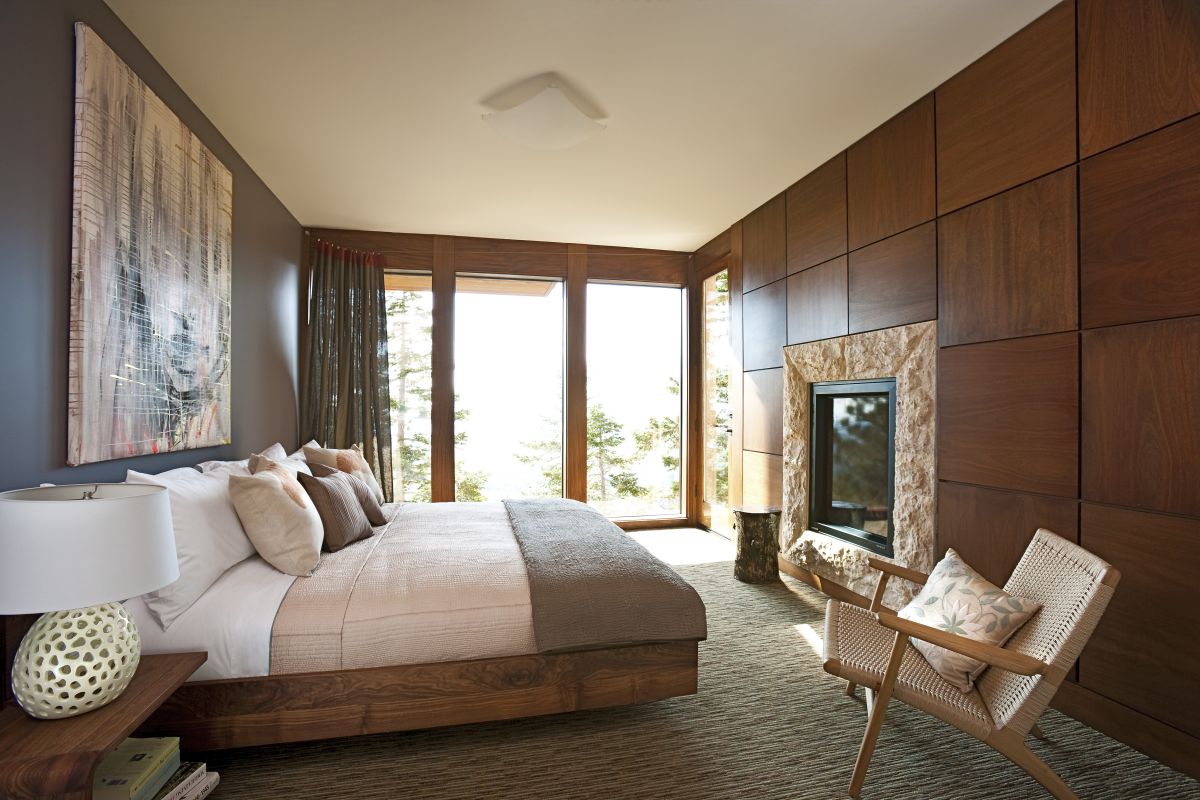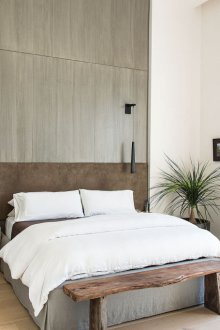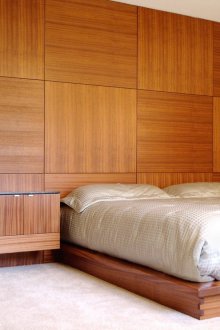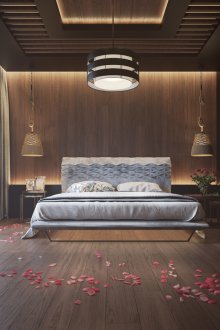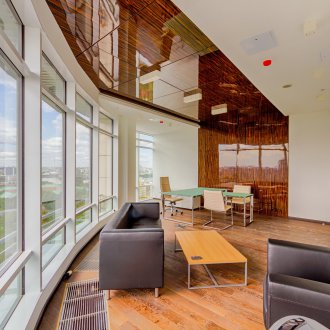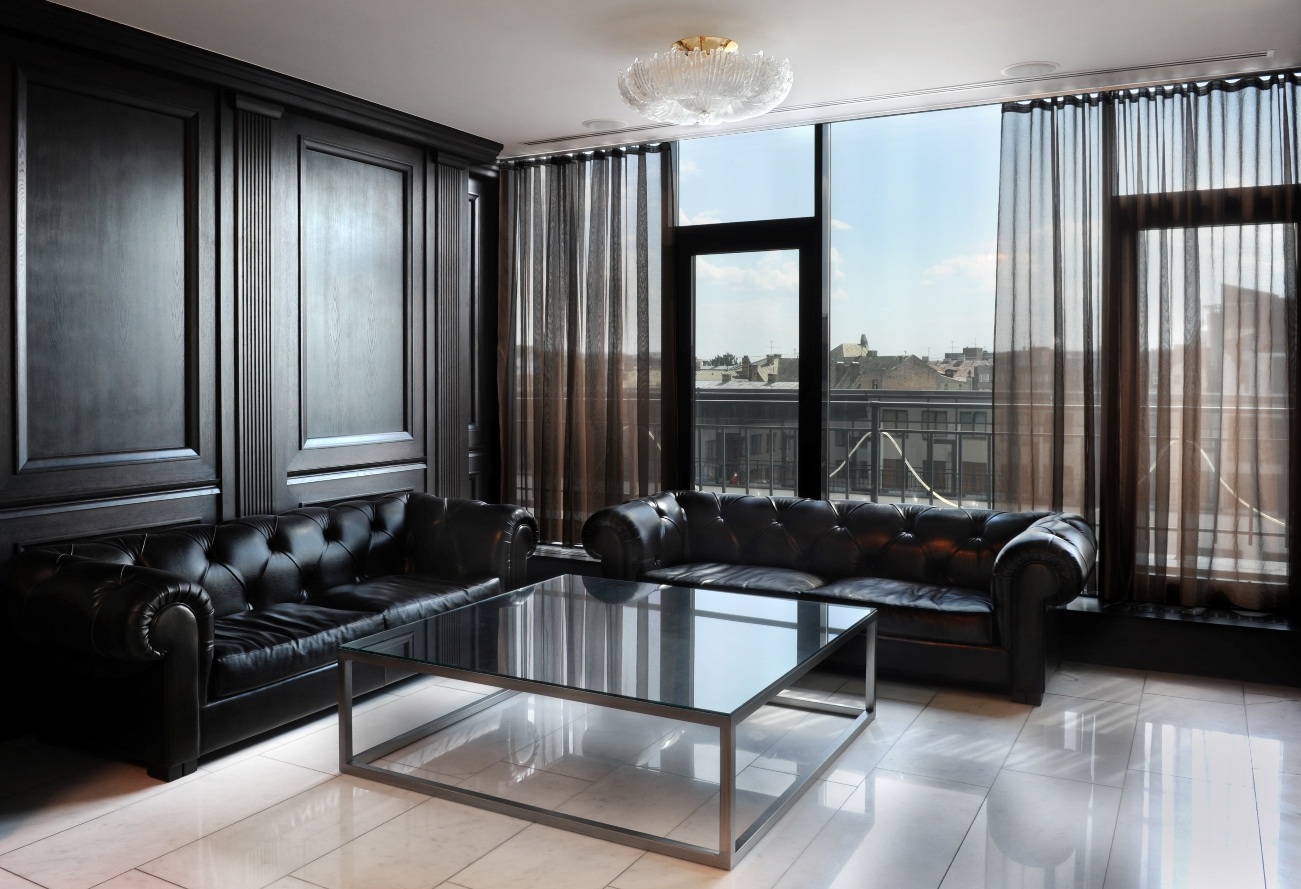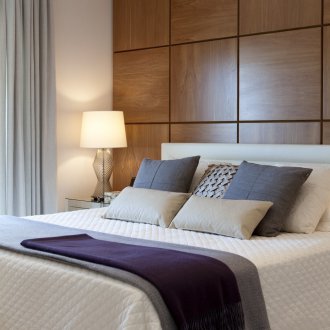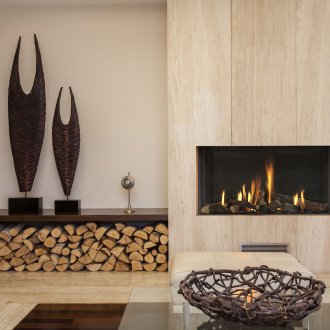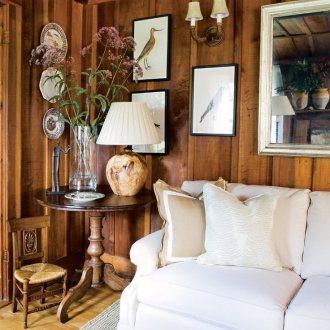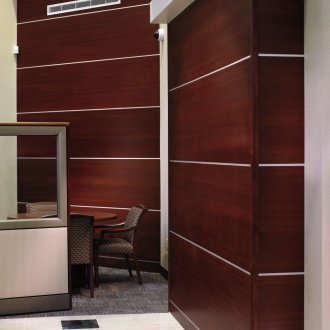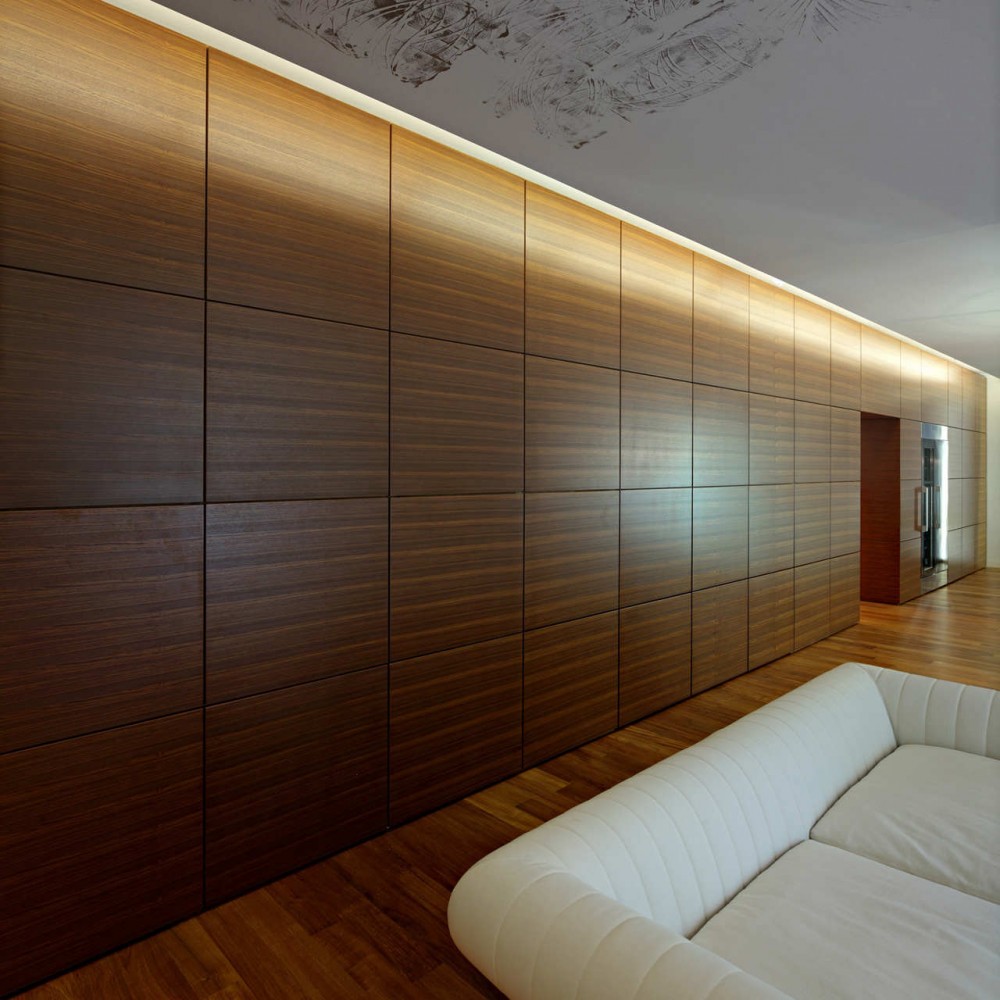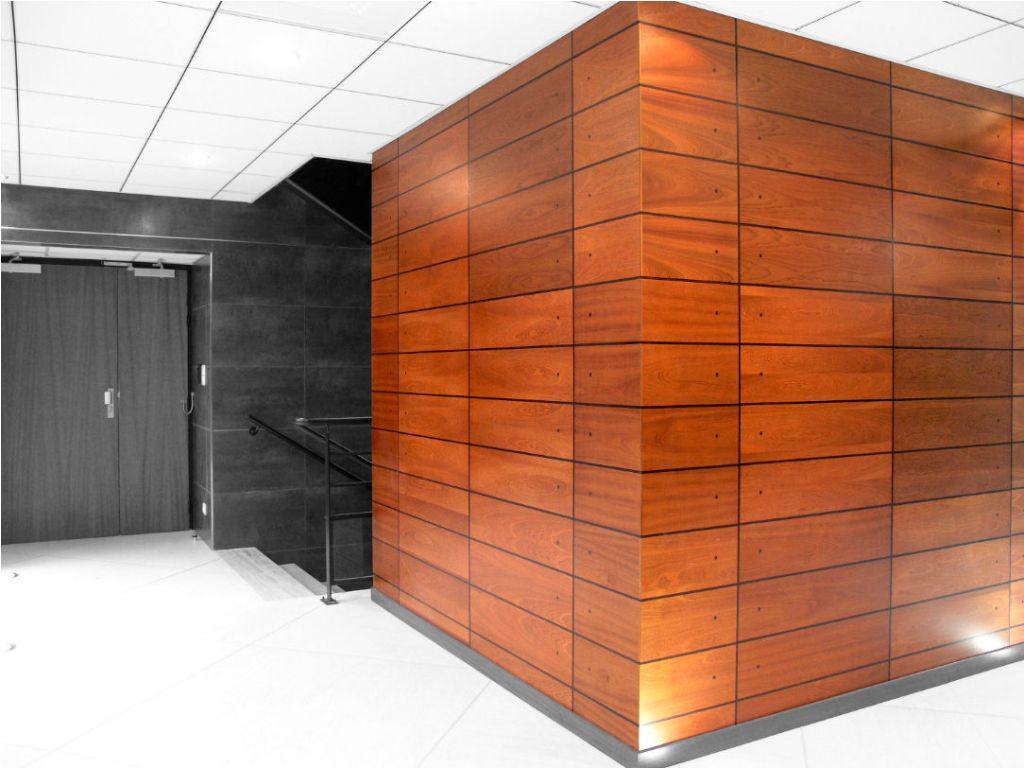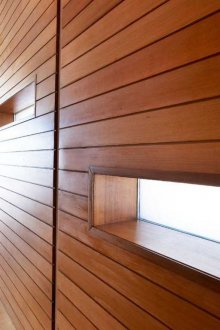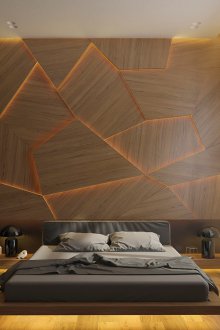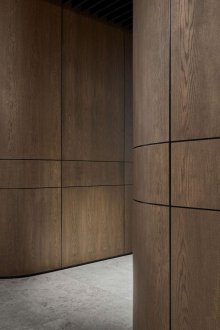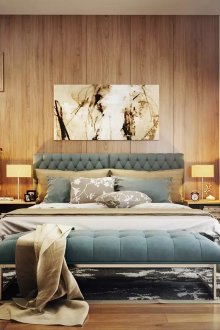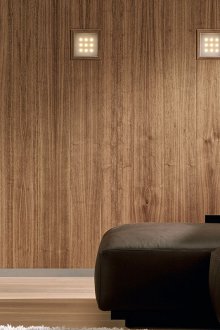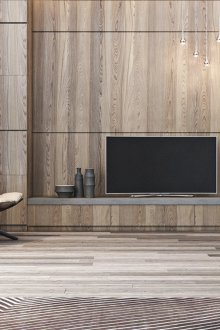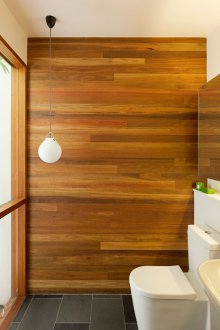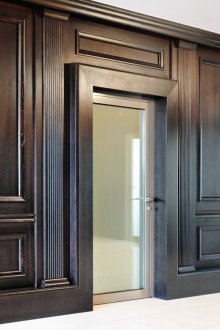Types of veneered panels and their features (25 photos)
Content
Veneered panels today are actively used in the process of interior decoration of walls and ceilings. They fit perfectly into most stylistic movements and are able to decorate a modern interior. Currently, the construction market offers a huge number of different panels for walls. They are made of natural wood, MDF and particleboard.
The veneer itself is a thin wood cut that conveys the appearance and structure of natural wood. It is used for interior doors, wall panels and furniture elements. Veneering is performed by hot pressing a wood sheet to a base of wood, MDF or particleboard.
Modern technology allows you to create a veneer called fineline, it is made from cheap wood and processed in such a way as to produce an imitation of valuable wood.
The material is stained, pressed, tinted and subjected to further processing. So they get the color and texture of the panels different from the natural, but at the same time the file line is a natural material.
Natural wood panels
Veneered panels for walls made of natural wood are rarely used because of their high cost and a small selection of colors and textures. The basis of such plates is a wooden array of low-value varieties, which are pasted with veneer from expensive species: oak, alder, cedar.
A room decorated with natural veneered panels looks very rich and impressive, but it costs such pleasure very expensive. But the material is natural and environmentally friendly.
MDF panels
Veneered MDF boards are visually very similar to wood, but they are much cheaper. MDF boards are made of finely ground chips, which are pressed under pressure at high temperature. For bonding do not use any chemical adhesives, during heat treatment, the chip releases a natural adhesive lignin. The resulting plate is ground across, and then along - so get a perfectly smooth surface. Then it is ironed with a special hot roller and stained with varnish or colored paint. At the end, the surface is covered with wax. All these procedures contribute to the improvement of such qualities of the material as strength and moisture resistance.
Designers love veneered MDF panels, as they provide a great opportunity to implement a variety of ideas. On sale there are a huge number of colors and textures of such material. They trim the ceiling and walls of living rooms, hallways, bedrooms, offices and other premises. Some types of veneered MDF can reproduce on the ceiling or wall the original panel, mosaic or a peculiar pattern. Such panels have other advantages:
- attractive and solid appearance: they are difficult to distinguish from natural wood;
- simplicity and ease of maintenance: it is enough to wipe the contaminated surface with a damp cloth, a broken plate can be easily replaced;
- good soundproof and heat-insulating qualities;
- ease of installation, which does not require any laborious preparation of the walls;
- a light weight;
- ecological cleanliness;
- low water absorption;
- resistance to fading.
Particleboard panels
For interior decoration, also use wall panels made of chipboard.This is the cheapest type of veneered finishing materials, since they are based on wood-particle board. It is obtained by pressing dry wood chips with the addition of synthetic adhesive resins. Veneering takes place in the same way as with MDF boards. Advantages of material from particleboard are:
- low price;
- ease of maintenance and installation;
- a large abundance of all kinds of colors and shapes.
But veneered chipboard panels have many disadvantages:
- poor environmental performance;
- absorb moisture;
- heavy weight;
- low quality in comparison with other veneered panels.
To increase the moisture resistance of the chipboard material, it is covered with plastic. In this case, the panel can have any appearance - from imitation oak to bright acid shades.
What are the shapes of the panels?
By size and shape, the panels are divided into:
- rack and pinion;
- tiled;
- leafy.
Slatted panels are long strips of various lengths, thicknesses and widths. This type is most popular when decorating walls or ceilings in small rooms. Installation of veneered rack-shaped panels is carried out on wooden or metal rails using self-tapping screws or staples. The slats are laid so that they are perpendicular to the guides. The planks are connected to each other by the spike into groove method. In this case, a minimum gap will remain between them. In the corner, the battens are joined with the help of special fittings.
Tiled materials are produced in the form of squares. This is the most convenient form of ceiling panels. They are attached to the wall with glue or special clamps. The main advantage of tile panels is that they can be placed at different angles and thus create an original pattern.
The largest sheet panels are made in the form of rectangles. Usually they are made from fiberboard impregnated with resin or particleboard. Sheet boards have a multilayer structure, on top of which a drawing is applied. It can be an imitation of wood, tile and other options. They are mounted to the wall with glue. The gaps between the sheet panels hide the moldings. Such plates are very convenient for facing a large area in a short time.
Decorative veneered panels can differ not only in shape and shade, but also in texture. Thanks to modern technology, smooth, rough, glossy or matte options can be found on sale.
Ideas for interiors
The variety of shapes, sizes and shades allows designers to fit veneered panels in almost any interior style. This cladding is used to create interiors in a classic, minimalist, colonial or eco-style.
In order to get a fashionable and original interior using veneered panels, use the following techniques:
- Take two types of panels of different colors, contrasting with each other, and arrange them in a checkerboard pattern, randomly or at certain intervals.
- If you have small children or animals, and you are worried about stains on the walls, you can pick up panels of colorful colors. It will be more original if you arrange them so that the wood fibers are directed in different directions: some horizontally, others vertically.
- The zoning method is perfectly applicable to this type of material: the wall section behind the bed or sofa is finished with panels, and the rest of the room is decorated with wallpaper or stucco.
- If you plan to decorate a large room, the chaotic arrangement of panels in two or three levels is suitable for you. And if you place lighting in separate plates, this will enhance the visual effect of the interior.
Veneered panels will allow you to create not only unique, but also practical design of any room. They absorbed the environmental friendliness and beauty of natural wood, but at the same time lacked its drawbacks: drying out and excessive moisture absorption.


